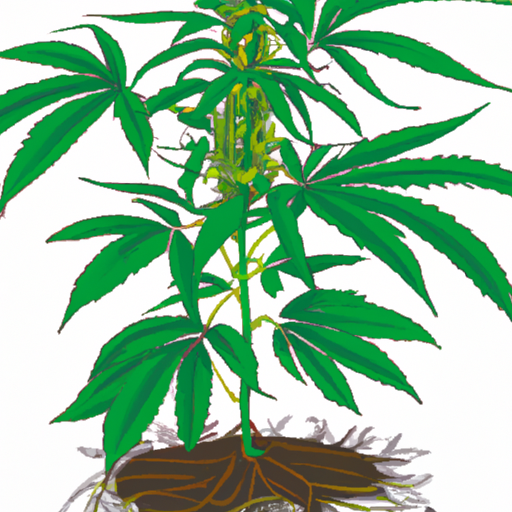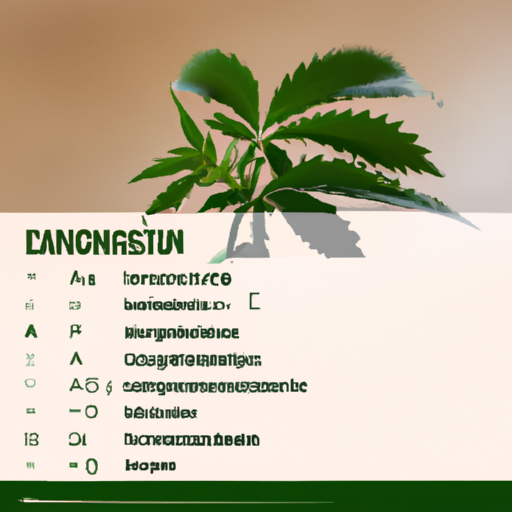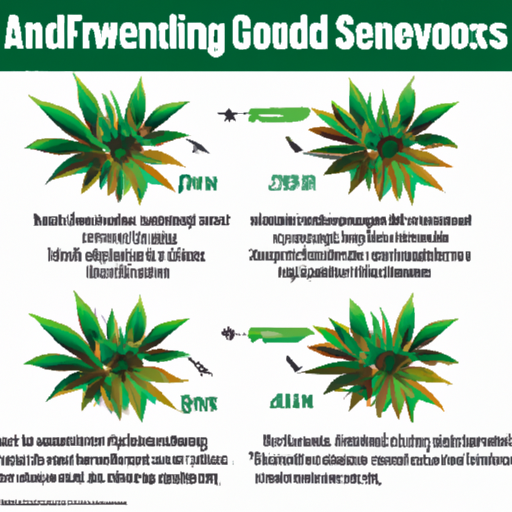This professional guide delves into the essential nutrient requirements and feeding schedules for the vegetative growth phase of cannabis. It provides a comprehensive understanding of what nutrients are vital during this growth stage and how to properly feed your cannabis plants to ensure optimal growth and health. The guide targets the key topics of "cannabis vegetative nutrients" and "cannabis feeding schedules."
Understanding the Vegetative Stage: What Does it Mean for Cannabis?
The vegetative stage is a crucial period in the growth cycle of cannabis plants. It is the phase where the plants focus on building a strong foundation before transitioning into the flowering stage. During this stage, the plants experience rapid growth in terms of height and foliage development. Understanding the vegetative stage is essential for providing the right care and nutrients to ensure healthy plant growth.
- 1. Duration of the Vegetative Stage:
The duration of the vegetative stage can vary depending on the strain and desired plant size. On average, it lasts between 4 and 8 weeks. Some growers may choose to extend the vegetative stage to allow for larger plants, while others may shorten it for smaller plants or to accommodate a shorter overall growth cycle. - 2. Light Requirements:
During the vegetative stage, cannabis plants require 18-24 hours of light per day. This extended light period simulates long summer days, promoting continuous growth and preventing the plants from entering the flowering stage prematurely. Growers typically use high-intensity discharge (HID) lights or light-emitting diodes (LEDs) to provide the necessary light intensity and spectrum for optimal growth. - 3. Nutrient Requirements:
Cannabis plants have specific nutrient requirements during the vegetative stage. They need a balanced supply of macronutrients such as nitrogen (N), phosphorus (P), and potassium (K), as well as secondary nutrients like calcium (Ca) and magnesium (Mg). Nitrogen, in particular, is crucial for promoting vigorous leaf and stem growth. Phosphorus and potassium support root development and overall plant health.During the vegetative stage, it is essential to provide the right balance of nutrients to avoid deficiencies or excesses. Nutrient deficiencies can manifest as yellowing or stunted growth, while nutrient excesses can cause nutrient lockout or nutrient burn. Regular monitoring of plant health and adjusting nutrient levels accordingly is crucial to ensure optimal growth during this stage.

Illustration of the cannabis plant during the vegetative stage.
The Importance of Nutrients: How Does it Impact the Vegetative Growth?
Nutrients play a vital role in the vegetative growth of cannabis plants. They are the building blocks that support the development of strong roots, stems, and leaves. Without the right balance of nutrients, plants may experience stunted growth, nutrient deficiencies, or even die.
Proper nutrient uptake during the vegetative stage ensures that the plants have the necessary resources to establish a healthy root system, which is essential for nutrient absorption and water uptake. This, in turn, allows the plants to absorb the essential macronutrients and micronutrients needed for optimal growth.
Nitrogen is particularly important during the vegetative stage as it is a key component of chlorophyll, the pigment responsible for photosynthesis. It promotes the production of new leafy growth and helps the plants develop a lush canopy.
Phosphorus and potassium are also essential for vegetative growth. Phosphorus supports root development, energy transfer, and overall plant metabolism. Potassium aids in water and nutrient transport, enzyme activation, and disease resistance.
In addition to these macronutrients, cannabis plants also require secondary nutrients such as calcium and magnesium for healthy growth. Calcium helps strengthen cell walls, reducing the risk of diseases and nutrient deficiencies. Magnesium is a component of chlorophyll and is vital for photosynthesis.
"What are the Essential Nutrients for Cannabis Vegetative Growth?"
During the vegetative growth stage, cannabis plants require a balanced supply of essential nutrients to support healthy development. These nutrients can be divided into macronutrients and micronutrients.
Macronutrients are needed in larger quantities and include nitrogen (N), phosphorus (P), and potassium (K). Nitrogen is crucial for the production of chlorophyll and promotes lush leafy growth. Phosphorus supports root development and aids in energy transfer. Potassium helps with water and nutrient transport and enhances disease resistance.
Micronutrients are needed in smaller amounts but are equally important for plant growth. These include calcium (Ca), magnesium (Mg), iron (Fe), manganese (Mn), zinc (Zn), copper (Cu), boron (B), and molybdenum (Mo). Calcium strengthens cell walls and enhances nutrient uptake. Magnesium is a vital component of chlorophyll. Iron is essential for photosynthesis and enzyme production.
Manganese, zinc, and copper are involved in enzyme activation and play a role in various metabolic processes. Boron supports cell division and the transport of sugars. Molybdenum is necessary for nitrogen metabolism.
To ensure that your cannabis plants receive the necessary nutrients during the vegetative stage, it is recommended to use a balanced nutrient solution specifically formulated for the vegetative phase. These solutions typically contain a higher ratio of nitrogen to support leafy growth.

Table of essential nutrients required during cannabis vegetative growth.
Feeding Schedules Explained: When Should You Feed Your Cannabis Plants?
Establishing a proper feeding schedule is essential for maximizing the growth potential of cannabis plants during the vegetative stage. While specific feeding schedules may vary depending on factors such as the strain, growing medium, and environmental conditions, certain general guidelines can be followed.
In the early stages of vegetative growth, when the plants are still small, it is recommended to provide a light feeding every 2-3 days. This helps establish a healthy root system and promotes initial leaf development. As the plants grow and the root system expands, the frequency of feeding can be increased to once a day or every other day.
Monitoring the plants' growth rate and overall health is crucial in determining the appropriate feeding schedule. If the plants are growing slowly or showing signs of nutrient deficiencies, it may be necessary to increase the frequency or strength of the nutrient solution. On the other hand, if the plants are growing vigorously and the leaves appear healthy, reducing the frequency or strength of feeding may be warranted.
It is important to note that overfeeding can be detrimental to cannabis plants. Excessive nutrients can lead to nutrient burn, where the tips of the leaves turn brown and crispy. To avoid this, it is recommended to start with a lower concentration of nutrients and gradually increase it as the plants grow.
Additionally, providing plain water or a nutrient solution without any fertilizers every few feedings is beneficial for flushing out any accumulated salts or excess nutrients in the growing medium. This helps prevent nutrient buildup and maintain a healthy root environment.
Overfeeding and Underfeeding: How to Avoid Common Mistakes?
Overfeeding and underfeeding are common mistakes that can negatively impact the growth and health of cannabis plants during the vegetative stage. Overfeeding occurs when plants receive an excessive amount of nutrients, leading to nutrient burn and potential damage to the roots. Conversely, underfeeding happens when plants do not receive enough nutrients, resulting in stunted growth and nutrient deficiencies.
To avoid overfeeding, it is crucial to carefully follow the recommended dosage guidelines provided by the nutrient manufacturer. Start with a lower concentration of nutrients and gradually increase it as the plants mature. Monitoring the plants' response is vital – if you notice signs of nutrient burn such as brown and crispy leaf tips, reduce the strength or frequency of feeding.
Underfeeding can be equally detrimental to the plants, causing slowed growth and nutrient deficiencies. To prevent underfeeding, regularly monitor the plants for signs of nutrient deficiencies such as yellowing or discolored leaves. Adjust the feeding schedule and nutrient concentration accordingly to ensure the plants receive adequate nutrition.
Maintaining a balanced pH level is also important in preventing both overfeeding and underfeeding. Improper pH levels can affect nutrient availability and uptake. It is recommended to regularly test the pH of the nutrient solution and adjust it to the optimal range for cannabis growth (around 6-7 pH). This ensures that the plants can efficiently absorb the nutrients they need without experiencing pH-related issues.
Finally, it is essential to pay attention to the specific nutrient requirements of cannabis plants during the vegetative stage. They typically require higher levels of nitrogen (N) and lower levels of phosphorus (P) and potassium (K). Following a nutrient formula specifically designed for the vegetative stage can help provide the ideal balance of nutrients for optimal growth.

Infographic showing the signs of overfeeding and underfeeding in cannabis plants.
The Role of pH in Nutrient Uptake: How Crucial is it?
The pH level of the nutrient solution plays a crucial role in the uptake and availability of nutrients for cannabis plants during the vegetative growth stage. pH stands for "potential of hydrogen," and it measures the acidity or alkalinity of a solution. The pH scale ranges from 0 to 14, with 7 being neutral, below 7 acidic, and above 7 alkaline.
Maintaining the correct pH level is essential because it directly affects the plants' ability to absorb nutrients. When the pH level is too high or too low, it can lead to nutrient lockout, where certain nutrients become unavailable to the plants. This can result in nutrient deficiencies, stunted growth, and overall poor health of the plants.
Cannabis plants have specific pH requirements for optimal nutrient uptake. During the vegetative stage, a pH range of 6-7 is generally recommended. This range ensures that nutrients, such as nitrogen, phosphorus, and potassium, are readily available to the plants.
Regularly testing the pH level of the nutrient solution is crucial to maintain the proper pH range. This can be done using pH testing kits or pH meters. If the pH is too high, it can be lowered by adding a pH down solution, typically made of phosphoric acid. Conversely, if the pH is too low, a pH up solution, usually made of potassium hydroxide, can be used to raise the pH level.
"How to Adjust Your Feeding Schedule Based on Plant Response?"
Adjusting your feeding schedule based on your cannabis plants' response is crucial for optimizing their growth during the vegetative stage. By closely monitoring your plants and observing their reactions, you can make necessary adjustments to ensure they receive the right amount of nutrients.
One way to determine if your plants need adjustments is by observing their overall health and appearance. If you notice yellowing or discolored leaves, it could indicate a nutrient deficiency or excess. Adjusting your feeding schedule can help address these issues and promote healthier growth.
Additionally, pay attention to your plants' growth rate. If they are growing too slowly or not showing significant progress, it may be a sign that they require more nutrients. On the other hand, if they are growing rapidly but becoming excessively tall and thin, it could indicate overfeeding. Adjusting the feeding schedule can help strike a balance and promote proper growth.
Another factor to consider is the environment. Environmental conditions, such as temperature, humidity, and light intensity, can influence nutrient uptake and plant response. If your plants are exposed to extreme temperatures or high humidity, they may require adjustments to their feeding schedule to accommodate their needs.

Flowchart guiding on how to adjust feeding schedules based on cannabis plant response.
Cannabis Vegetative Growth: Nutrients and Feeding Schedules:
| Nutrients | Role | Feeding Schedule | Amount |
|---|---|---|---|
| Nitrogen | builds proteins and helps with photosynthesis | every other day | 3-5 ml |
| Phosphorus | promotes strong root growth and flowering | every two days | 3-4 ml |
| Potassium | helps with water retention and regulates stomata | every two days | 2-3 ml |
| Magnesium | assists with photosynthesis and chlorophyll production | every two days | 2-3 ml |
Understanding and implementing appropriate nutrient requirements and feeding schedules during the vegetative growth stage of cannabis is crucial for the plant's overall health and yield. By adhering to the guidelines outlined in this guide, growers can ensure their cannabis plants receive the essential nutrients they need at the right time, thus promoting robust and healthy vegetative growth.





